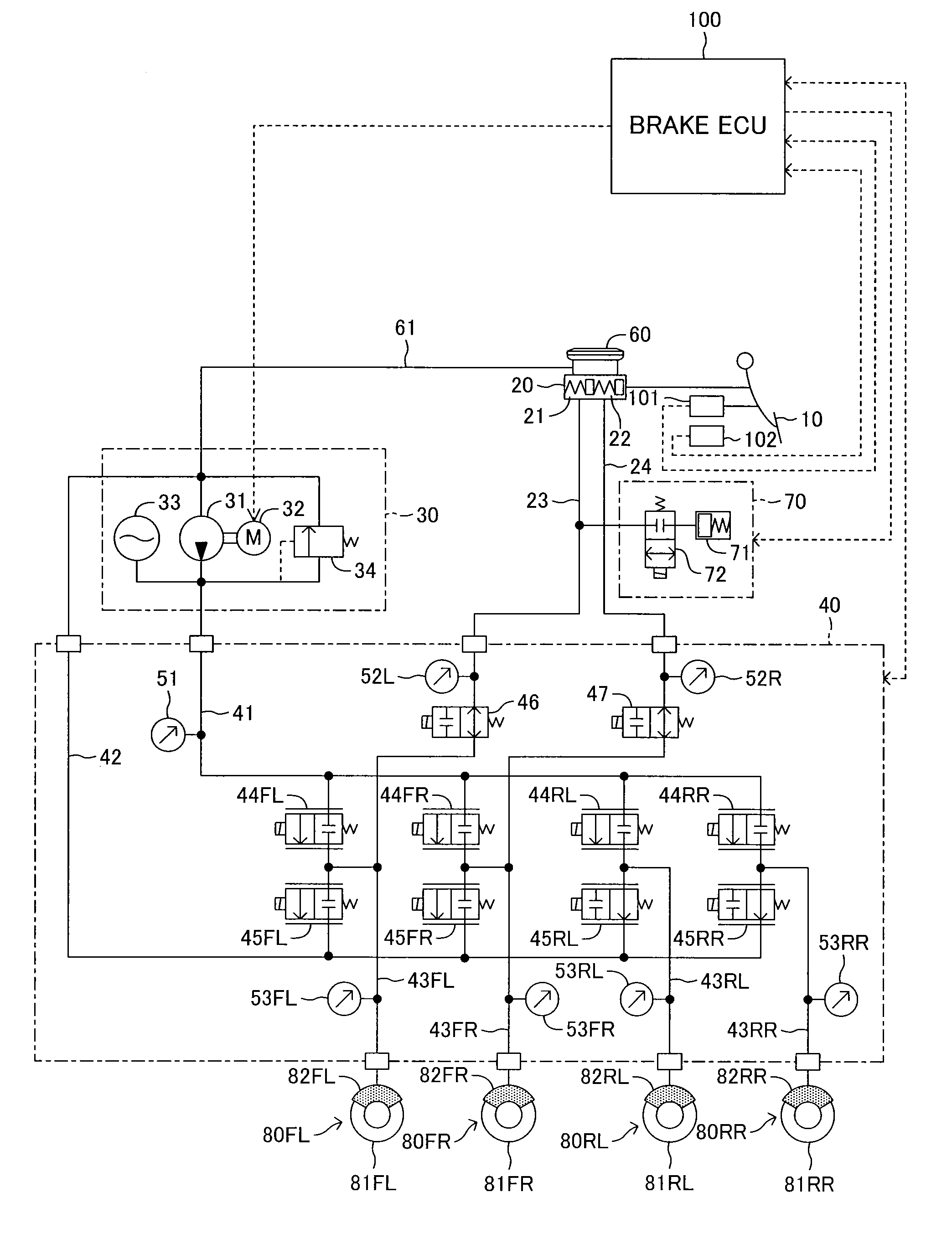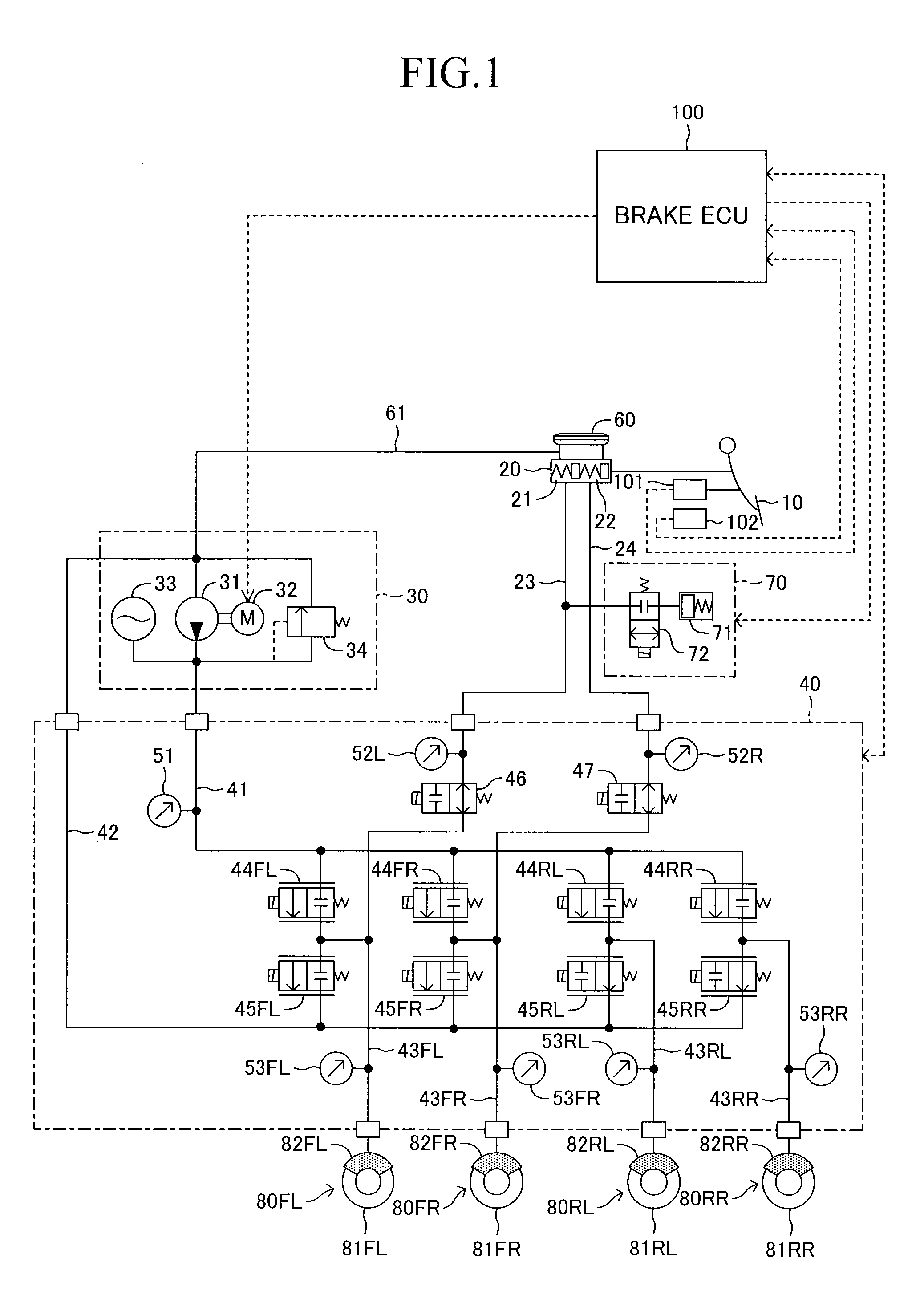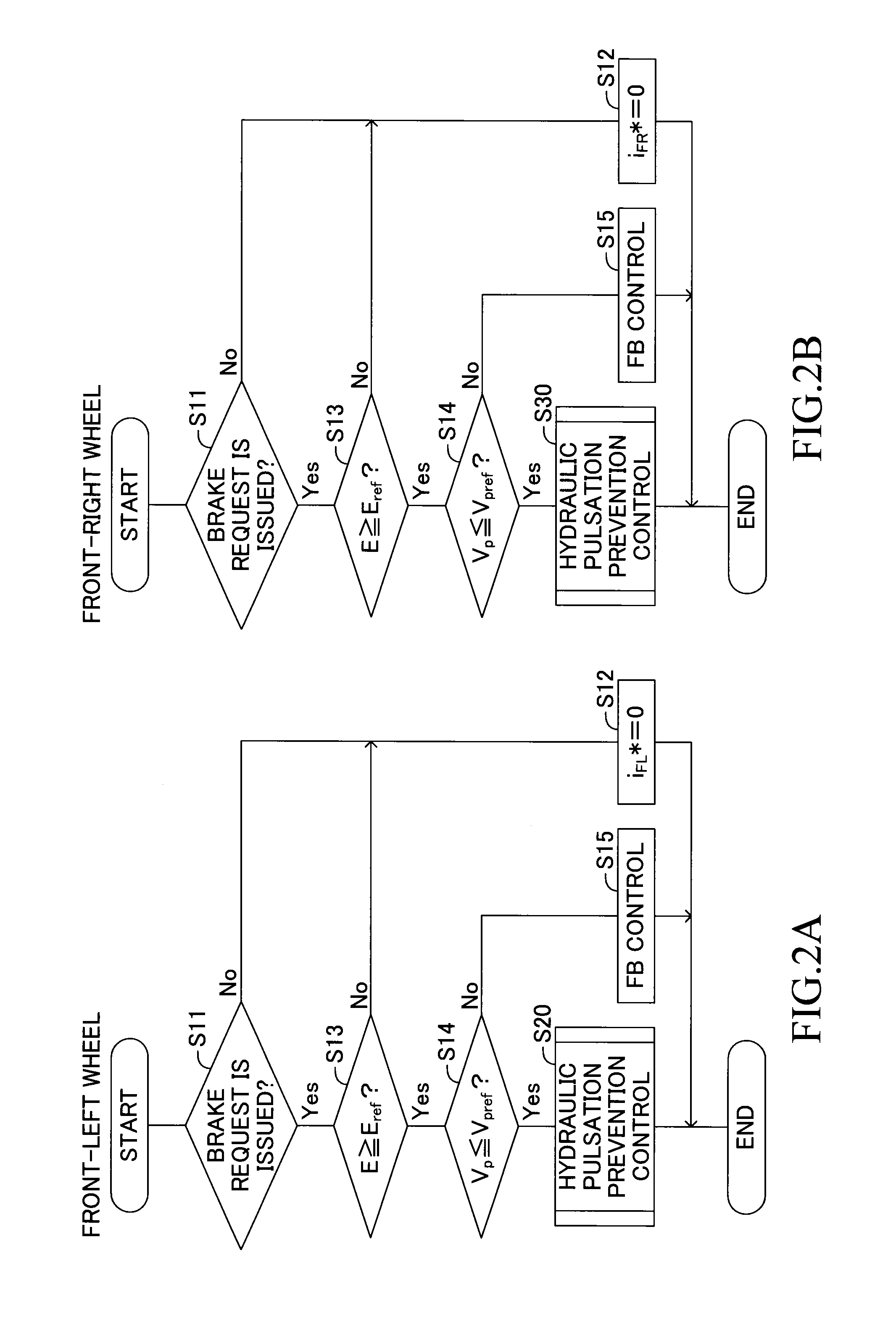Vehicle brake control device
a brake control and vehicle technology, applied in the direction of braking systems, instruments, analogue processes for specific applications, etc., can solve the problems of difficult to keep the pressure-increasing valve slightly open, abnormal noise, and provide uncomfortable feeling to the driver, so as to reduce the current value, reduce the variation of vehicle deceleration, and enhance the effect of driver comfor
- Summary
- Abstract
- Description
- Claims
- Application Information
AI Technical Summary
Benefits of technology
Problems solved by technology
Method used
Image
Examples
first embodiment
According to Deceleration Variation Prevention Control
[0069]Subsequently, a deceleration variation prevention control will be described. The deceleration variation prevention control is executed when the target hydraulic pressure of the wheel cylinders 82 for the left and right wheels are the same.
[0070]When the brake pedal 10 is depressed, the pressure-increasing linear control valve 44 is opened to supply the operating fluid to the wheel cylinder 82 from the power hydraulic pressure generating device 30. When the pressure-increasing linear control valve 44 is sharply opened, pulsation of the hydraulic pressure of the operating fluid occurs to generate abnormal noise in a pipe. Such problem can be solved by slowly opening the pressure-increasing linear control valve 44 with a gradual increase in the value of the current flowing through the pressure-increasing linear control valve 44 from a value smaller than the valve-opening current. This energization control is referred to as a h...
second embodiment
According to Deceleration Variation Prevention Control
[0101]Next, a second embodiment of a deceleration variation prevention control will be described. In the first embodiment, the pressure-increasing linear control valves 44FL and 44FR are prevented from being closed at the same timing by using the decrease set values i1 and i2, in order to suppress the variation in the vehicle deceleration. On the other hand, in the second embodiment, the timing at which energization is started is shifted between the pressure-increasing linear control valves 44FL and 44FR in order to prevent the pressure-increasing linear control valves 44FL and 44FR from being closed at the same timing.
[0102]FIG. 5 illustrates the hydraulic pulsation prevention control subroutine for the front-right wheel according to the second embodiment. The hydraulic pulsation prevention control subroutine for the front-left wheel is the same as that in the first embodiment. In the hydraulic pulsation prevention control subro...
PUM
 Login to View More
Login to View More Abstract
Description
Claims
Application Information
 Login to View More
Login to View More - R&D
- Intellectual Property
- Life Sciences
- Materials
- Tech Scout
- Unparalleled Data Quality
- Higher Quality Content
- 60% Fewer Hallucinations
Browse by: Latest US Patents, China's latest patents, Technical Efficacy Thesaurus, Application Domain, Technology Topic, Popular Technical Reports.
© 2025 PatSnap. All rights reserved.Legal|Privacy policy|Modern Slavery Act Transparency Statement|Sitemap|About US| Contact US: help@patsnap.com



